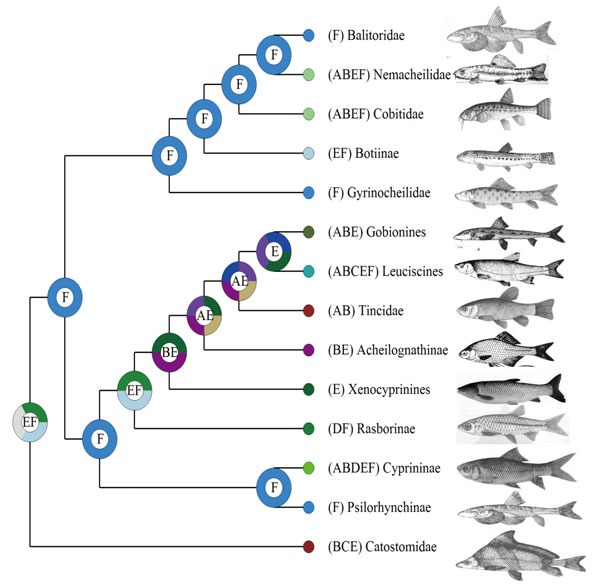The Cypriniformes comprise approximately 4,200 extant species with nearly worldwide distribution. They are good examples of adaptive radiations and species richness and the group is among the most diverse groups of ray-finned fishes, including the most abundant freshwater fishes. The phylogenetic relationships within Cypriniform fishes seemed to be an intractable problem as different studies showed.
In a recent study published online in SCIENCE CHINA Life Sciences, the phylogeny of Cypriniformes was resolved by a research team led by Prof. HE Shunping from Institute of Hydrobiology (IHB) of Chinese Academy of Sciences using multiple molecular markers.
To improve the understanding of the evolutionary history of this diverse and important freshwater fish group, researchers carried out phylogenetic and biogeographic analysis.
They yielded a robust tree based on Maximum Likelihood analyses and Bayesian inference, and further confirmed the monophyly of Cypriniformes. In addition, they found that the origin of the Cypriniformes was during the early Jurassic, and the possible initial geographical range of the ancient Cypriniformes was both East and South Asia (Southeastern area of Mesozoic Laurasia).
Pharyngeal dentition of Cypriniform fishes displayed incredible amount of diversity both in terms of number and shape compared to other groups. Researchers also found plasticity of pharyngeal teeth possibly contributed to the burst in species diversity of Cyprinidae, as well as Cypriniformes, afforded by the nearly worldwide colonization.
This work was supported by the Pilot projects, CAS Center for Excellence in Animal Evolution and Genetics, the National Natural Science Foundation of China, and the Fundamental Research Funds for the Central Universities (Ministry of Education of China).

Geographic evolution of cypriniform fishes from S-DIVA. The six geographical regions are (A) Europe, (B) Sibera, (C) North America, (D) Africa, (E) East Asia, and (F) South Aisa. (Image by IHB)

